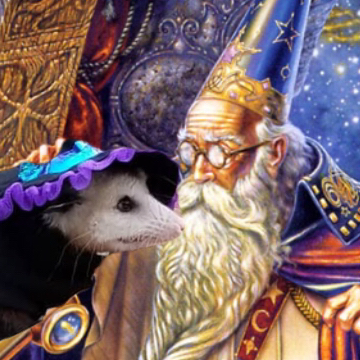So technically 32 Cygni is just the bright star in the pic, and the rest of it is just hydrogen gas floating around in space. The constellation Cygnus has a ton of this hydrogen-alpha gas floating around, and I kinda just pointed at a semi-random spot in the constellation to get a pic. Although this was taken with an Ha filter, the stars are true color RGB, and I mapped the Ha channel to red so it closely resembles the actual color of hydrogen-alpha. Also for those curious here is a starless version that better shows the faint nebulosity/structures. Also pls ignore the crunchiness around 32 Cyg itself, it’s an artifact of my camera’s microlensing + the star removal program I use. Captured over like a dozen nights in December 2024 from a bortle 9 zone.
Places where I host my other images:
-
TPO 6" F/4 Imaging Newtonian
-
Orion Sirius EQ-G
-
ZWO ASI1600MM-Pro
-
Skywatcher Quattro Coma Corrector
-
ZWO EFW 8x1.25"/31mm
-
Astronomik LRGB+CLS Filters- 31mm
-
Astrodon 31mm Ha 5nm, Oiii 3nm, Sii 5nm
-
Agena 50mm Deluxe Straight-Through Guide Scope
-
ZWO ASI-290mc for guiding
-
Moonlite Autofocuser
Acquisition: 29 hours 18 minutes (Camera at -15°C), unity gain
-
Ha - 161x600"
-
R - 51x60"
-
G - 59x60"
-
B - 48x60"
-
Darks- 30
-
Flats- 30 per filter
Capture Software:
- Captured using N.I.N.A. and PHD2 for guiding and dithering.
PixInsight Preprocessing:
-
BatchPreProcessing
-
StarAlignment
-
Blink
-
ImageIntegration per channel
-
DrizzleIntegration (2x, Var β=1.5)
-
Dynamic Crop
-
DynamicBackgroundExtraction
duplicated each image and removed stars via StarXterminator. Ran DBE with a shitload of points to generate background model. model subtracted from original pic using the following PixelMath (math courtesy of /u/jimmythechicken1)
$T * med(model) / model
Narrowband Linear:
-
Blur and NoiseXTerminator
-
StarXterminator to completely remove stars from each the image
-
HistogramTransformation to stretch nonlinear (calling this the Ha image now)
Broadband/RGB linear:
-
ChannelCombination to make color image from R G and B stacks
-
StarX (correct only)
-
SpectrophotometricColorCalibration
(duplicated image at this point, to be used for stars only processing later)
-
StarX to completely remove stars (at this point it’s just background, with a little bit of signal in the R channel)
-
Blended unstretched Ha image into the red (and a little bit of the blue channel) with this pixelmath:
R = $T+B*(Ha- med(Ha))
G = $T
B = $T+B*0.2*(Ha- med(Ha))
honestly can’t remember what I used for the B constant, but the default is 2 in my pixelmath ¯\_(ツ)_/¯
-
HistogramTransformation to stretch nonlinear (calling this the Starless image now)
Stars only processing:
-
HSV repair to fix blown out star cores
-
StarXterminator to generate an image containing only the stars (without any background)
-
ArcsinhStretch + Histogramtransformation to stretch nonlinear (Calling this the Stars image now)
Nonlinear:
-
LRGBCombination to add the stretched Ha image to the stretched Starless image as a luminance layer
-
NoiseXterminator
-
Background neutralization
-
Several curve transformations to adjust lightness, contrast, saturation, color balance, etc
-
LocalHistogramEqualization
-
Another round of noiseX
-
Pixelmath to add in the stretched RGB Stars image from earlier
This basically re-linearizes the two images, adds them together, and then stretches them back to before. More info on it here)
mtf(.005,
mtf(.995,Stars)+
mtf(.995,Starless))
-
few more curve adjustments
-
FastRotation 180 degrees (pic was originally upside down)
-
DynamicCrop again (just a little bit)
-
Resample to 60%
-
Annotation
-
Hey cool pic! Thanks for sharing it and the detailed writeup! Can I use it as a wallpaper on my tablet please?
Go for it


